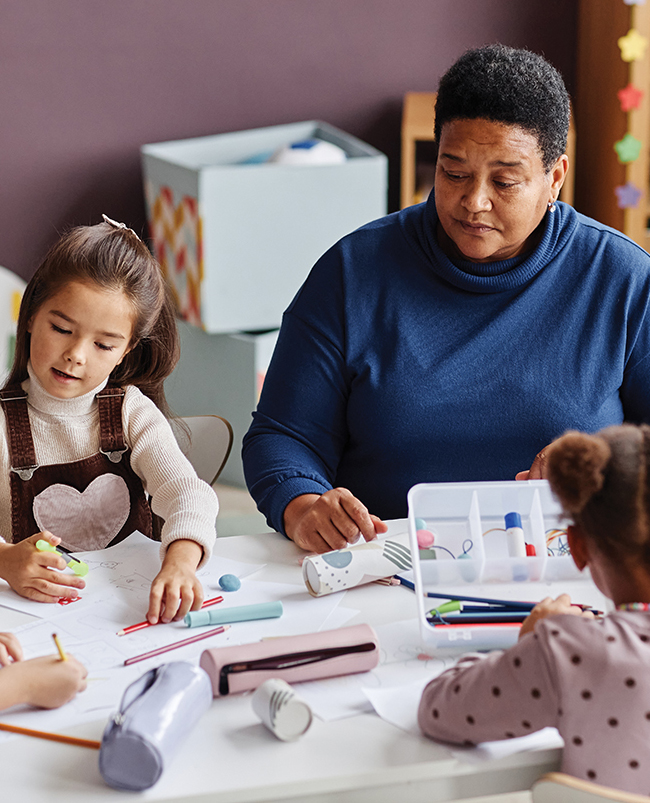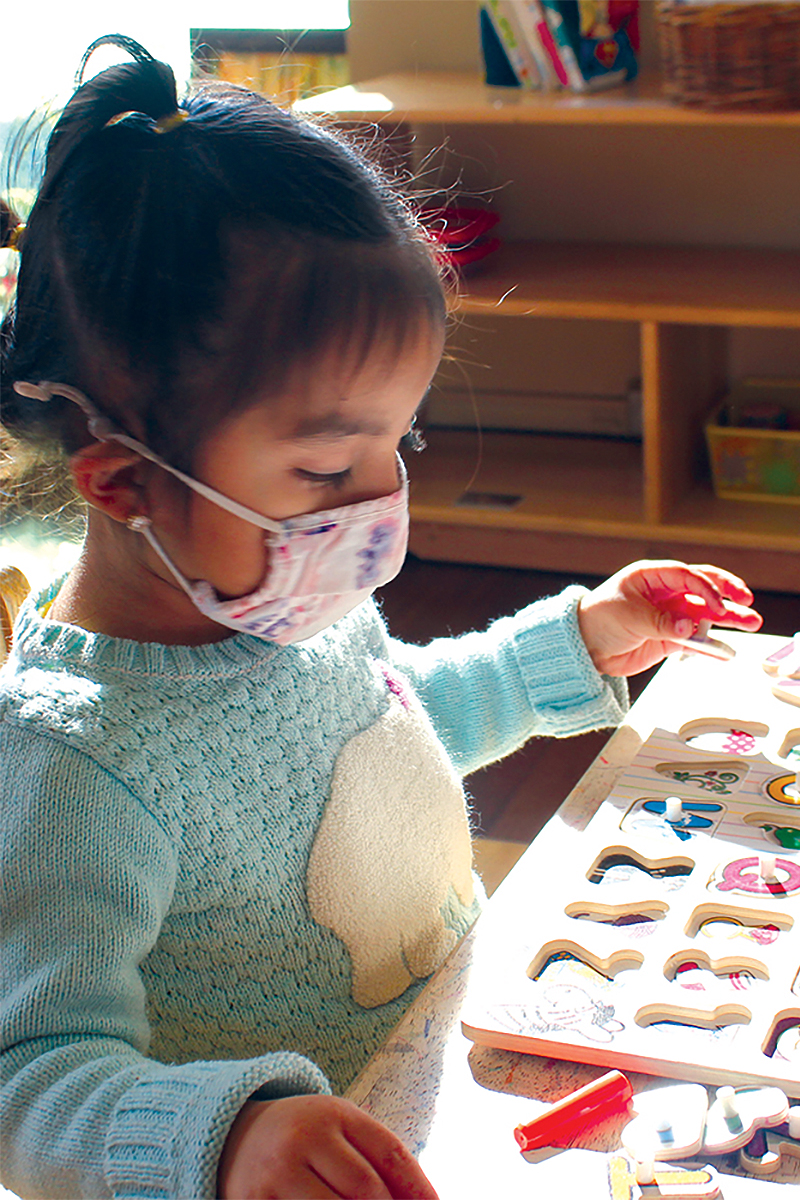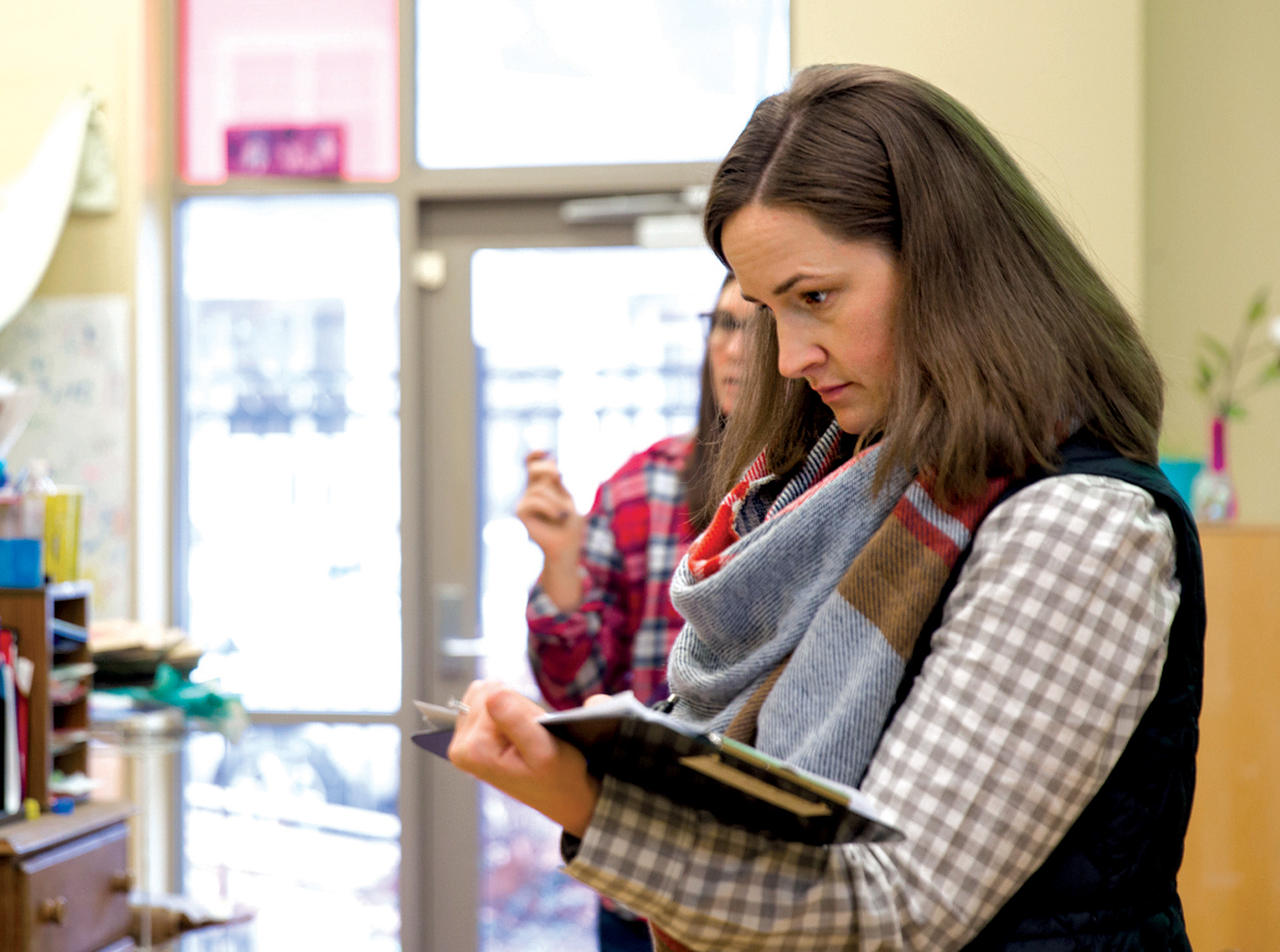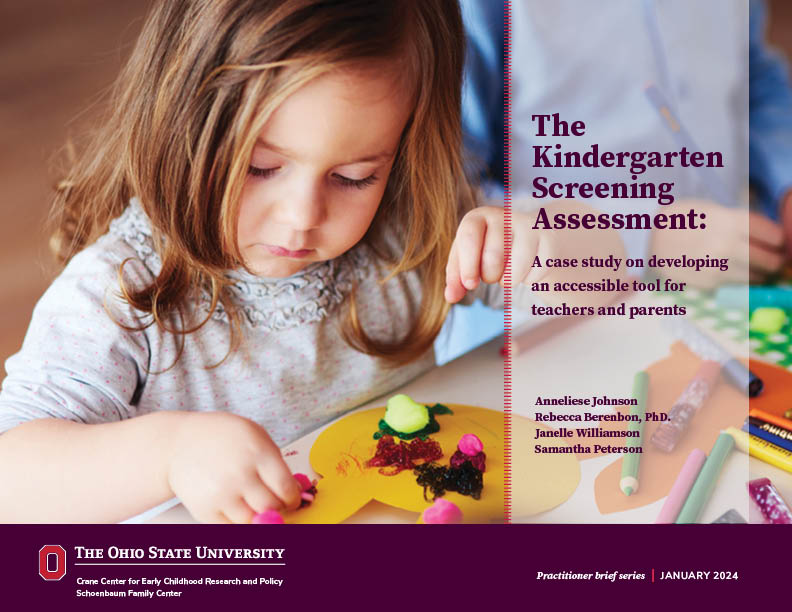AUTHORS: Anneliese Johnson, Rebecca Berenbon, PhD., Janelle Williamson, Samantha Peterson
Head Start defines school readiness as “children possessing the skills, knowledge, and attitudes necessary for success in school and for later learning and life. Physical, cognitive, social, and emotional development are all essential ingredients of school readiness” (Head Start, 2023). The Head Start definition of school readiness also expands to capture teachers and families, meaning: “children are ready for school, families are ready to support their children’s learning, and schools are ready for children.”

MEASURE DEVELOPMENT
Practitioners at the A. Sophie Rogers School developed the KSA as a screening tool to measure kindergarten readiness in a way that is also relatable for parents and families. The KSA covers five domains: social and emotional development, physical well-being and motor development, language and literacy development, cognition and general knowledge (mathematics), and approaches toward learning.
Tasks require children to demonstrate skills such as counting objects and identifying letters which provide parents with a straightforward and concrete snapshot of their child’s development. Tasks for each domain were drawn from the existing knowledge-base on child development from resources like Head Start’s Effective Practice Guides for social-emotional functioning, physical well-being and motor development, language and literacy development, and mathematics. Additional tasks were adapted from measures like the Denver II (physical well-being and motor development) and the CELF-5 (language and literacy development).
ADMINISTRATING THE KSA
The KSA is administered by a child’s teacher or another trained staff member in the fall and spring of each school year. The screening is given in a quiet area of the classroom or in a nearby area outside of the classroom using a child-sized table and chairs. The materials and prompts used during the assessment should be at hand and organized for easy administration. Materials include: letters of the alphabet, numbers one through 20, colored blocks, page of color samples, pattern examples, and small color blocks. The screening may be stopped and re-started for several factors including disengagement or inattention from the child. It should be noted in the comments/observation section if a child requested to end the screening often or was unable to attend to the adult for the duration of the questions since being able to attend to and answer questions from an adult are key skills for kindergarten readiness.
RELIABILITY AND VALIDITY
In the spring of 2023, the A. Sophie Rogers School partnered with a psychometrician at The Ohio State University’s Center on Education and Training for Employment (CETE) to establish evidence of reliability and validity of the KSA as a kindergarten readiness assessment CETE analyzed data from N=141 administrations of the KSA along with corresponding Brigance score data. The overall test shows excellent reliability (α = 0.96), and four out of the five major subtests also showed strong reliability. The KSA’s high reliability indicates that students taking the KSA would be likely to receive a similar score if they were to take the test again; in other words, the KSA is a precise measure of kindergarten readiness. The KSA’s overall scores (both raw scores and scaled scores) were strongly and significantly correlated with Brigance overall scores (raw and composite); furthermore, all KSA scores for major subtests were significantly correlated with corresponding Brigance subtest scores. These correlations indicate concurrent validity, meaning that the KSA is generally in agreement with the already well-established Brigance assessment. Recommendations were made to improve the tool, like adding more items to the physical well-being and motor development and listening and speaking subtests to improve reliability and correct for ceiling effect. Since receiving these recommendations, practitioners at the A. Sophie Rogers School edited questions within the KSA to improve reliability. These updated items will be tested in future data collection points to capture if reliability improves.
The results of the KSA are compiled and shared with teaching teams. During bi-weekly meetings, teaching teams and supervisors review data from all child screenings, assessments, pupil-progress monitoring tools, work samples and observations. This data is also shared with families at beginning and end-of-year conferences, as well as during routine check-ins throughout the year. Together with families, educational goals are developed and learning activities are devised to support achievement of goals and individualized instruction in lesson plans. The KSA results may indicate opportunities for early intervention or additional experiences to best support a child. It also provides an opportunity to inform families about important kindergarten milestones and how to help their child succeed at home and school.


USING THE KSA WITH TEACHERS AND FAMILIES
The results of the KSA are compiled and shared with teaching teams. During bi-weekly meetings, teaching teams and supervisors review data from all child screenings, assessments, pupil-progress monitoring tools, work samples and observations. This data is also shared with families at beginning and end-of-year conferences, as well as during routine check-ins throughout the year. Together with families, educational goals are developed and learning activities are devised to support achievement of goals and individualized instruction in lesson plans. The KSA results may indicate opportunities for early intervention or additional experiences to best support a child. It also provides an opportunity to inform families about important kindergarten milestones and how to help their child succeed at home and school.
CONCLUSION
Overall, there is a need for child development tools to be accessible for teachers and parents. The KSA developed at the A. Sophie Rogers School for Early Learning provides an example of creating a novel measure of kindergarten readiness designed to be more accessible to parents and to engage them early in their child’s development.
RECOMMENDATIONS
1) Practitioners and administrators can use this case study as an example of how to develop a straightforward and accessible tool that helps teachers individualize instruction and gives parents a snapshot of how their child is developing on the path to kindergarten readiness.
2) Practitioners should consider partnering with researchers to ensure that the tools they are using are reliable and valid for their intended use.

REFERENCES:
Effective practice guides. ECLKC. (2020, June 9). https://eclkc.ohs.acf.hhs.gov/school-readiness/effective-practice-guides/effective-practice-guides
Frankenburg, W. K., & Archer, P. (1992). Denver II: Training manual (2nd ed.). Denver Developmental Materials, Inc.
French, B. F. (2013). Brigance Inventory of Early Development (IED III). North Billerica, MA: Curriculum Associates LLC.
Kannan, P., Zapata-Rivera, D., & Leibowitz, E. A. (2018). Interpretation of Score Reports by Diverse Subgroups of Parents. Educational Assessment, 23(3), 173–194. https://doi.org/10.1080/10627197.2018.1477584
School readiness. ECLKC. (2022, December 29). https://eclkc.ohs.acf.hhs.gov/school-readiness
Wiig, E. H., Semel, E., & Secord, W. A. (2013). Clinical evaluation of language fundamentals–fifth edition (CELF-5). Bloomington: NCS Pearson.
AUTHOR NOTE:
The activities of the Crane Center for Early Childhood Research and Policy are supported in part by a generous gift of the Crane family to The Ohio State University. Correspondence about this work may be addressed to Janelle Williamson, email: williamson.620@osu.edu.
The recommended citation for this paper is:
Johnson, A., Berenbon, R., Williamson, J., Peterson, S. (2024). The Kindergarten Screening Assessment: A case study on developing an accessible tool for teachers and parents. Columbus, Ohio: Schoenbaum Family Center & Crane Center for Early Childhood Research and Policy & The Ohio State University.
ACKNOWLEDGEMENT:
Thank you to Rebecca Dore and Jamie O’Leary for their edits to this brief and help with dissemination along with Michael Meckler, and thank you to Cathy Kupsky for designing this brief.



